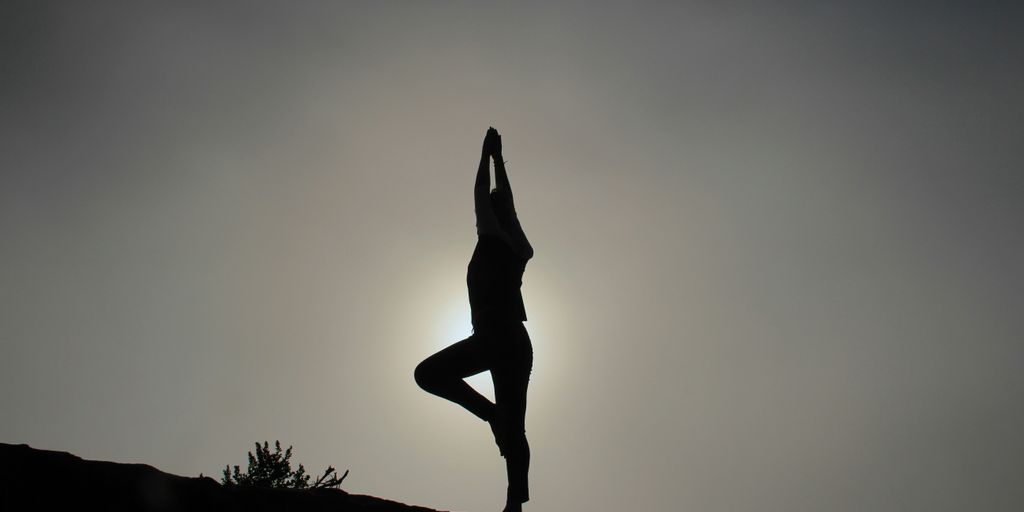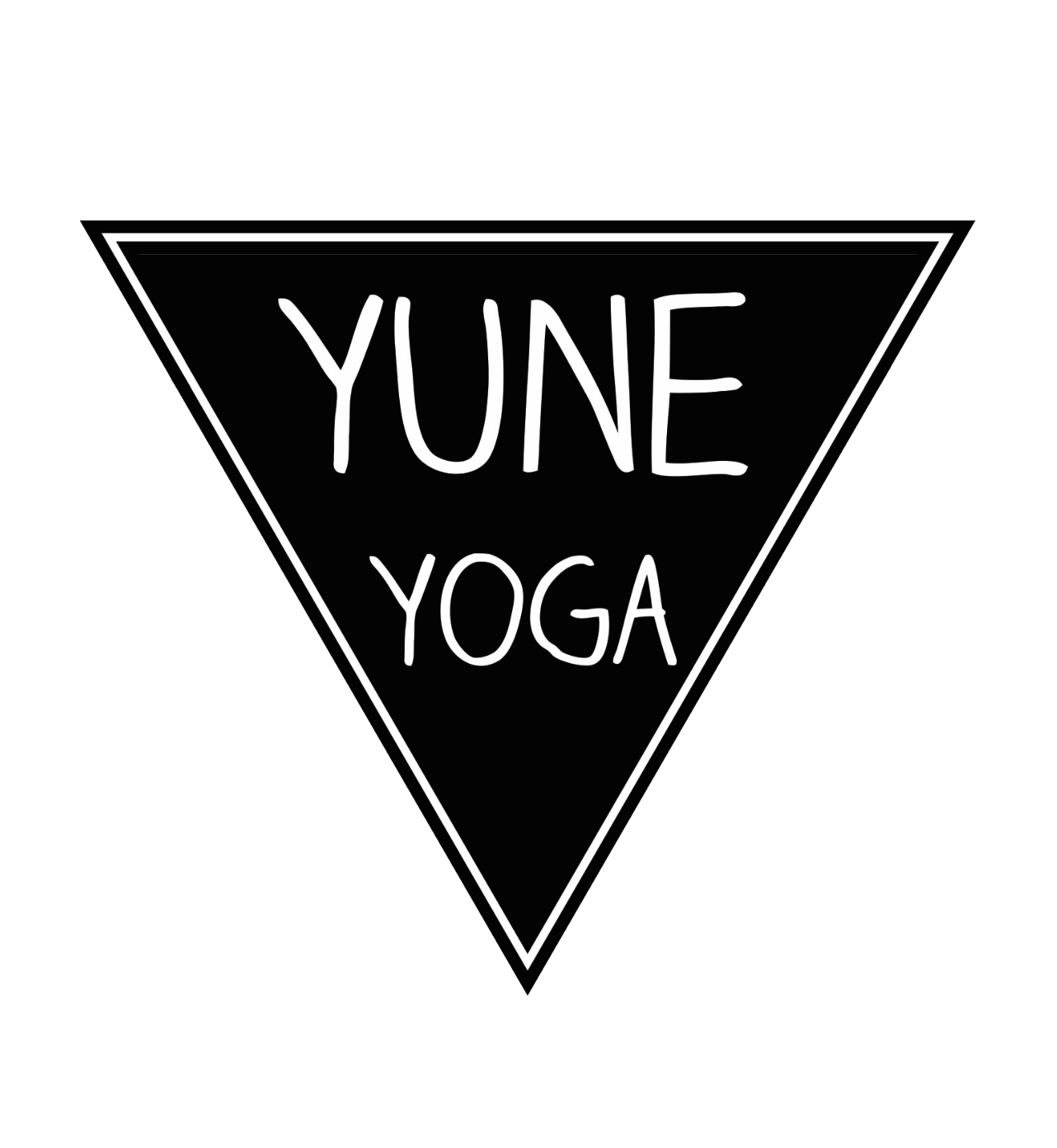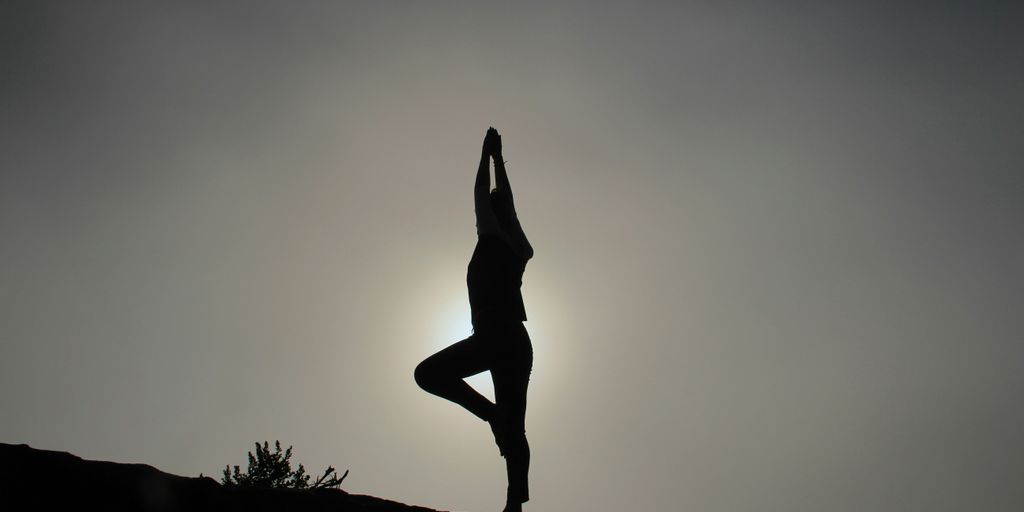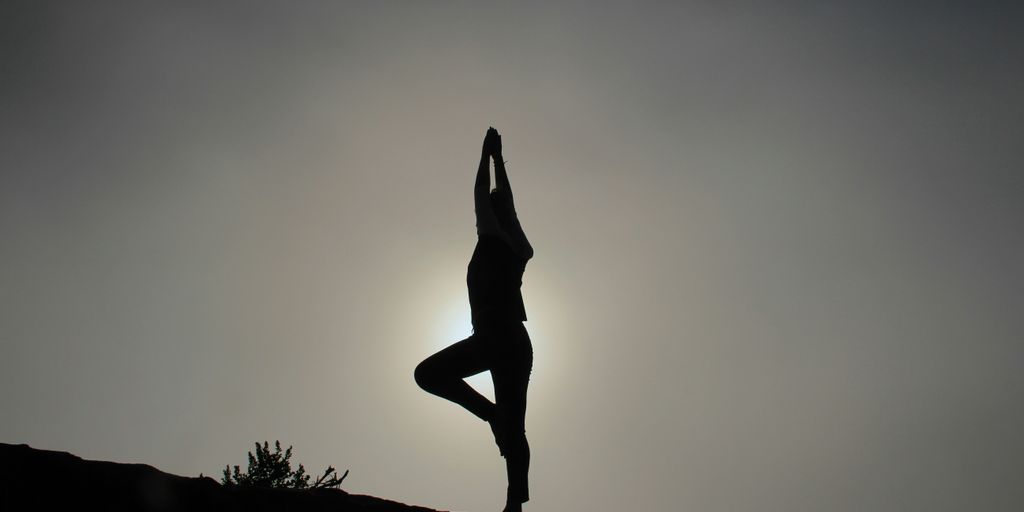
How to Begin with Yoga: A Simple Guide for New Practitioners
Thinking about starting yoga? It can be a bit overwhelming at first, but don’t worry, you’re not alone. This guide is here to help you figure out how to begin with yoga, offering simple tips and advice that make the process easier. Whether you’re looking to stretch, relax, or just try something new, you’ll find everything you need to get going right here. So roll out your mat and let’s dive in!
Key Takeaways
- Yoga is about connecting your body, mind, and breath.
- Start with beginner-friendly poses to build a strong foundation.
- Choose a class that matches your skill level and comfort.
- Create a cozy space for your practice at home.
- Join a community to stay motivated and learn from others.
Understanding Yoga Fundamentals
What Is Yoga?
So, what is yoga anyway? It's more than just stretching or posing in fancy positions. Yoga is a really old practice that tries to bring your mind, body, and spirit together. What people usually think of as yoga, with all the poses, is actually just one type called Hatha Yoga. There are many different kinds, but they all aim for the same thing: making you feel whole and connected.
Benefits of Practicing Yoga
Why should you even bother with yoga? Well, there are tons of good reasons! Here are a few:
- It can make you more flexible.
- It can help you feel less stressed.
- It can make you stronger.
- It can improve your balance.
- It can help you sleep better.
Yoga isn't just about the physical stuff. It's also about learning to be more mindful and present in your life. It's about connecting with yourself on a deeper level. It's a process, not a quick fix.
Different Styles of Yoga
There are so many different kinds of yoga, it can be confusing! Here's a quick rundown of some popular styles:
- Hatha: A gentle, basic style that's great for beginners. It focuses on holding poses for a longer time.
- Vinyasa: A more fast-paced style where you move from one pose to the next, linking your breath to the movement. It's sometimes called "flow yoga."
- Ashtanga: A set sequence of poses that you do in the same order every time. It's pretty intense and physically demanding.
- Bikram: Done in a really hot room (like, 105 degrees!). It's a set sequence of 26 poses. People say it helps you sweat out toxins, but it's not for everyone.
- Restorative: A super relaxing style where you hold poses for a long time with props like blankets and pillows. It's all about letting go and relaxing. You can find essential yoga poses for beginners in Hatha and Restorative.
Preparing for Your First Class
So, you're thinking about going to your first yoga class? Awesome! It can feel a little intimidating, but with a bit of prep, you'll be just fine. Let's walk through some things to consider before you even roll out your mat.
Choosing the Right Class
Not all yoga classes are created equal. Seriously. You wouldn't jump into an advanced calculus class without knowing basic math, right? Same goes for yoga. Look for classes specifically labeled "Beginner," "Gentle," or "Introduction to Yoga." These classes will move at a slower pace and focus on the basics. Also, consider the style. A beginner yoga class is a great place to start. Hatha is generally a good option for beginners, as it focuses on foundational poses and breathwork. Avoid hot yoga or power yoga for your first time; those are intense!
What to Bring to Class
Okay, so what do you actually need to bring? Not much, thankfully! Here's a quick checklist:
- Yoga Mat: Most studios have mats you can borrow, but it's way better to have your own. It's more hygienic, and you'll feel more comfortable. Plus, you can practice at home!
- Water Bottle: Staying hydrated is key, especially during physical activity.
- Towel: You might sweat, depending on the class. A small towel is always a good idea.
- Comfortable Clothing: Think clothes you can move freely in. Stretchy pants or leggings and a comfortable top are perfect. Avoid anything too baggy that might get in the way.
- An Open Mind: Seriously, leave your expectations at the door. Yoga is about the journey, not the destination.
Setting Your Intentions
This might sound a little woo-woo, but it's actually really helpful. Before class, take a few minutes to think about what you want to get out of the practice. Are you looking to reduce stress? Increase flexibility? Connect with your body? Setting an intention can help you stay focused and present during class. It doesn't have to be anything profound; even something as simple as "I will be kind to myself today" can make a difference.
It's easy to get caught up in trying to do everything perfectly, but yoga is really about listening to your body and honoring where you are in the moment. Don't push yourself too hard, and remember to breathe. It's okay to modify poses or take breaks whenever you need to. The most important thing is to enjoy the experience and be present in your body.
Essential Yoga Poses for Beginners
Alright, so you're ready to actually do some yoga? Awesome! Don't feel like you need to be a pretzel right away. We're going to start with some basic poses that are great for building a solid foundation. No need to jump into crazy inversions or try to be as flexible as the person next to you. Seriously, just focus on what your body can do today.
Basic Standing Poses
Standing poses are super important because they help you build strength, balance, and body awareness. They might seem simple, but they're actually doing a lot for you. Mountain Pose is the foundation for many standing poses.
- Mountain Pose (Tadasana): Stand tall, feet together or slightly apart. Engage your thighs, keep your spine long, and relax your shoulders. It's all about finding your center.
- Tree Pose (Vrikshasana): This one's all about balance. Place one foot on your inner thigh (avoid the knee) and find a steady gaze. It's okay if you wobble! That's part of the process. Focus on cultivating balance.
- Warrior II (Virabhadrasana II): Step one foot forward and bend your front knee, keeping it aligned over your ankle. Extend your arms out to the sides, parallel to the floor. This pose builds strength and opens your hips.
Seated Poses for Flexibility
Seated poses are great for stretching your hips, hamstrings, and spine. They're also a nice way to calm your mind and connect with your breath.
- Staff Pose (Dandasana): Sit with your legs extended in front of you, spine straight. Press your hands into the floor beside your hips. This pose helps you find your alignment and lengthen your spine.
- Seated Forward Fold (Paschimottanasana): From Staff Pose, reach forward towards your toes. Don't worry if you can't touch them! Just focus on lengthening your spine and folding from your hips. This is one of the essential yoga poses for beginners.
- Easy Seated Pose (Sukhasana): Simply sit cross-legged on the floor. This is a great pose for meditation or just taking a few deep breaths.
Gentle Backbends
Backbends can be a little intimidating, but they're actually really good for opening your chest and strengthening your spine. Start with gentle ones and listen to your body.
- Cobra Pose (Bhujangasana): Lie on your stomach, place your hands under your shoulders, and gently lift your chest off the floor. Keep your elbows slightly bent and your shoulders relaxed. This pose strengthens your spine and opens your chest.
- Locust Pose (Salabhasana): Lie on your stomach, extend your arms back, and lift your chest, arms, and legs off the floor. This pose strengthens your back muscles and improves posture.
- Bridge Pose (Setu Bandhasana): Lie on your back, bend your knees, and place your feet flat on the floor. Lift your hips off the floor, engaging your glutes and hamstrings. This pose strengthens your back, glutes, and hamstrings.
Remember, yoga isn't about touching your toes on day one. It's about discovering what your body can do and growing from there. Don't compare yourself to others, and just focus on your own journey.
Creating a Comfortable Practice Space
Setting up the right space for your yoga practice can make a huge difference. It's not just about having enough room to stretch; it's about creating an environment where you feel relaxed, focused, and motivated to practice. Think of it as your personal sanctuary – a place where you can escape the stresses of daily life and connect with yourself.
Choosing the Right Environment
Where you practice matters. Ideally, you want a space that's quiet and free from distractions. A spare room is great, but even a corner of your bedroom or living room can work. Consider these factors:
- Noise Level: Minimize noise from traffic, family members, or electronics. Maybe try some noise-canceling headphones if you live in a busy area.
- Temperature: Keep the room at a comfortable temperature. Too hot, and you'll feel sluggish; too cold, and your muscles will tense up.
- Lighting: Natural light is ideal, but if that's not possible, use soft, warm lighting to create a calming atmosphere.
Essential Equipment for Beginners
You don't need a ton of fancy equipment to start practicing yoga. However, a few key items can enhance your experience:
- Yoga Mat: This is the most important piece of equipment. Look for a mat that's thick enough to provide cushioning but not so thick that it's difficult to balance on. A good yoga mat is key.
- Blocks: Yoga blocks are helpful for beginners who may not be able to reach the floor in certain poses. They can also be used to modify poses and make them more accessible.
- Straps: Yoga straps can help you improve your flexibility and deepen your stretches. They're especially useful for poses like seated forward folds.
Personalizing Your Space
Making your practice space your own is key to creating a positive and inviting environment. Here are a few ideas:
- Plants: Adding a few plants can bring a sense of nature and tranquility to your space.
- Aromatherapy: Use essential oils or incense to create a calming and relaxing atmosphere. Lavender, sandalwood, and chamomile are all great choices.
- Inspirational Decor: Hang artwork, quotes, or photos that inspire you and remind you of your goals.
Creating a dedicated yoga space is an investment in your well-being. It signals to your mind and body that it's time to slow down, focus, and connect with yourself. Even a small, simple space can have a big impact on your practice.
Developing a Consistent Practice Routine

So, you've started yoga, which is awesome! But how do you keep it going? It's easy to let life get in the way, but with a few tricks, you can make yoga a regular part of your life. It's all about finding what works for you and sticking with it, even when you don't feel like it. Trust me, your body (and mind) will thank you.
How Often to Practice
Okay, so how much yoga is enough? There's no magic number, but aiming for at least 2-3 times a week is a solid start. Even 15-20 minutes can make a difference. The key is consistency over intensity. Don't feel like you need to do a full 90-minute class every time. Short, regular sessions are often more effective than sporadic long ones. Listen to your body and adjust as needed. Some days you might feel great doing an hour, other days 15 minutes is all you've got. That's totally fine!
Setting Realistic Goals
Let's be real, setting unrealistic goals is a recipe for disappointment. Instead of aiming to become a yoga master overnight, start small. Maybe your goal is to practice yoga twice a week for 30 minutes each time. Or perhaps it's to finally nail that basic standing pose you've been struggling with. Whatever it is, make sure it's achievable and specific. As you progress, you can always adjust your goals. Remember, it's a journey, not a race.
Tracking Your Progress
Keeping track of your yoga journey can be super motivating. It doesn't have to be complicated. Here are a few ideas:
- Journaling: Jot down how you feel before and after each session. Note any improvements in flexibility, strength, or mental clarity. It's cool to journal the effects and see how far you've come.
- Calendar: Mark the days you practice yoga. Seeing a visual representation of your consistency can be really encouraging.
- Photos: Take progress pictures. It might feel a bit silly, but comparing photos from when you started to a few months later can be a great way to see physical changes.
Don't get discouraged if you miss a day or two (or even a week!). Life happens. Just get back on the mat as soon as you can. The important thing is to keep showing up for yourself and your practice.
Mindfulness and Breath in Yoga
Understanding Breathwork
Breathwork, or pranayama, is a big deal in yoga. It's more than just breathing; it's about connecting your mind and body. Beginners often start with simple techniques, like deep abdominal breathing. Put one hand on your chest and the other on your belly to feel the rise and fall. This helps you stay calm, even when things get crazy. Over time, mastering pranayama techniques can improve focus and reduce stress.
Incorporating Mindfulness
Mindfulness is about being present. It's about noticing your thoughts and feelings without judgment. In yoga, this means paying attention to your body, your breath, and your movements. It's not always easy, especially when your mind is racing. But with practice, you can learn to quiet the noise and find a sense of calm. Mindfulness isn't just for yoga; it's a life skill.
Here are some ways to bring mindfulness into your yoga practice:
- Focus on your breath: Notice the sensation of the air entering and leaving your body.
- Pay attention to your body: Notice how each pose feels. Are there any areas of tension?
- Let go of judgment: Don't criticize yourself if you can't do a pose perfectly. Just do your best.
Staying connected to your breath is like having a built-in reset button. Whenever you feel overwhelmed, a few deep breaths can bring you back to center.
The Role of Meditation
Meditation is a powerful tool for cultivating mindfulness and inner peace. It involves training your mind to focus on a single point, such as your breath or a mantra. It can seem intimidating, but it doesn't have to be complicated. Start with just a few minutes each day and gradually increase the time as you become more comfortable. Even five minutes of daily meditation practice can make a difference.
Here's a simple meditation exercise to try:
- Find a quiet place where you won't be disturbed.
- Sit comfortably with your spine straight.
- Close your eyes and focus on your breath.
- When your mind wanders, gently bring your attention back to your breath.
Finding Community and Support
Yoga can be a very personal journey, but it doesn't have to be a solitary one! Connecting with others can really enrich your practice, provide motivation, and offer different perspectives. It's like having a team cheering you on, sharing tips, and celebrating milestones with you. Plus, it's just nice to know you're not alone in your yoga journey.
Joining Local Yoga Classes
One of the easiest ways to find community is by joining local yoga classes. It's more than just following instructions; it's about sharing space and energy with others. You'll find people of all levels, and you might just make some lasting friendships. I remember being nervous for my first class, but everyone was so welcoming! Check out Beginner's Yoga for an inclusive experience.
Online Yoga Communities
If you can't make it to in-person classes, or if you just want to expand your network, online yoga communities are a great option. There are tons of forums, social media groups, and online platforms where you can connect with other practitioners from all over the world. Share your experiences, ask questions, and get inspired by others. It's like having a global yoga family at your fingertips. You can find sources of inspiration online.
Connecting with Other Practitioners
Don't underestimate the power of connecting with other practitioners, even outside of formal classes or online groups. Strike up conversations with people you see at the studio, or reach out to friends who are also into yoga. You can share tips, practice together, or just offer each other support. Sometimes, just knowing that someone else understands what you're going through can make all the difference.
Finding a community can really help you stick with your practice. It's about more than just the physical poses; it's about the shared experience and the support you get from others. Don't be afraid to reach out and connect – you might be surprised at the friendships you form and the inspiration you find.
Final Thoughts on Your Yoga Journey
Starting yoga can seem a bit scary, but it doesn’t have to be. Just take your time, pay attention to how your body feels, and enjoy the ride. Whether you’re getting the hang of the basics or trying something a bit tougher, every pose is a step toward feeling stronger and more at peace. Remember, it’s not about being perfect; it’s about showing up and giving it a shot. So, roll out your mat, take a deep breath, and keep exploring. You’ve got this!
Frequently Asked Questions
What do I need to know before starting yoga?
If you're new to yoga, focus on simple poses and pay attention to your body. Don’t push yourself too hard, and check with a doctor if you have any health issues.
How often should I practice yoga as a beginner?
It's best to do yoga 2-3 times a week when you're starting out. As you get more comfortable, you can practice more often based on your schedule.
What are some easy yoga poses for beginners?
Some good beginner poses include Mountain Pose, Child's Pose, and Cat-Cow Pose, which help you learn the basics.
What should I bring to my first yoga class?
Bring a yoga mat, water bottle, and wear comfortable clothes that allow you to move freely.
How can I create a good space for practicing yoga at home?
Choose a quiet place where you feel relaxed. Make sure you have a mat and maybe some blocks or straps to help with poses.
Is it important to have a yoga community?
Yes! Joining a local class or an online group can help you stay motivated and learn from others.


